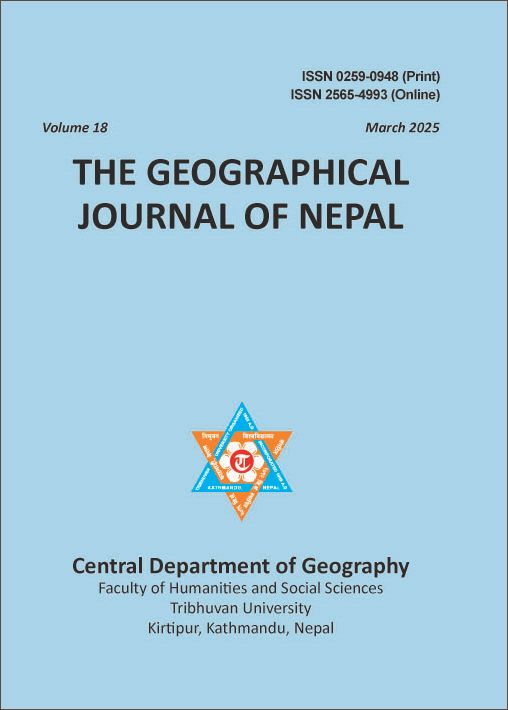Spatial and Temporal Voting Patterns in 2017 and 2022 in Nepal
DOI:
https://doi.org/10.3126/gjn.v18i1.77066Keywords:
Spatial distribution, voting pattern, contiguity measures, quadrant analysis, chi-squareAbstract
The present study analyses the spatial distribution patterns of voting and vote differences, and gender composition based on the results of the direct elections by the eligible people at three levels, viz. House of Representatives, Provincial Assembly, and Local Units in Nepal conducted in the years of 2017 and 2022. The study also analyzes the spatial voting patterns of major parties such as the Nepali Congress, the United Marxist Leninist, and the Maoist Center by the rural-urban and three ecological regions. Based on the data published by the Election Commission of Nepal, three methods such as the contiguity technique, quadrant technique, and chi-square test of independence have been used for finding the spatial voting patterns. While the GIS technique has been used to measure the contiguity and quadrant analysis, SPSS has been used to get chi-square values. The results of the election data show that the spatial pattern of the three major political parties differed remarkably at the three government levels between the two election years. At the individual party level, the party, who got the largest number of votes in the 2017 election for making government, did not get the same result in the 2022 election. Further, none of those three large major parties could get the required size of votes for making governments at all three levels. Thus, the analysis reveals mixed patterns of spatial and temporal voting distribution in Nepal.
Downloads
Downloads
Published
How to Cite
Issue
Section
License
Copyright (c) 2025 The Author(s)

This work is licensed under a Creative Commons Attribution 4.0 International License.
© Authors




